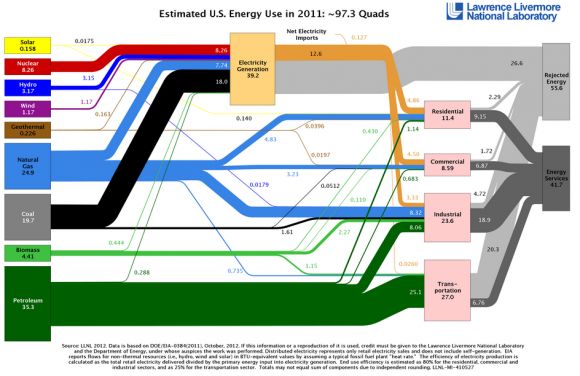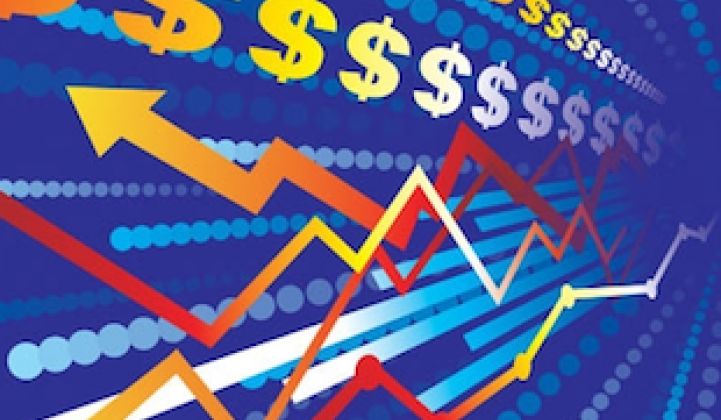There's no doubt that the U.S. economy has grown even while energy demand has decreased.
Over the last four decades, as economic activity directly tied to energy use (energy services) tripled, the energy intensity of the economy fell by half. A recent study from ACEEE concluded that energy efficiency was responsible for meeting 75 percent of the demand for energy services since 1970, while actual supply met only 25 percent.
The Energy Information Administration has just published another indicator about the energy efficiency of our economy. Since 1950, America's gross domestic product has closely followed consumption of electricity. And while that link will remain well into the future, the EIA projects that electricity consumption required to maintain economic growth will drop. Take a look:

According to EIA, America's electricity use increased by roughly 5 percent a year from 1950 through the 1970s. In the following two decades, from 1980 through the 1990s, electricity consumption grew only 2 percent annually. And since the early 2000s, that growth has dropped to .9 percent per year.
So this once again proves that our economy is becoming more energy efficient, right? That's the "glass half full" way of looking at the picture, anyway.
From an historical economic perspective, we have gotten more efficient; we are using less energy per dollar of GDP. But we are still wasting a ton of energy. As the flowchart below from the Lawrence Livermore National Laboratory using EIA data shows, we waste more than half of the energy produced in the U.S. That hardly makes the economy energy-efficient.

We can look at this another way. Skip Laitner, the economist who wrote the above-mentioned ACEEE paper, says our economy is only 14 percent energy-efficient. Laitner believes that measuring the conversion of raw energy into energy services (physical work) is a more appropriate metric for understanding efficiency. When measured this way, the energy conversion efficiency of the U.S. economy has shrunk from a 1.4 percent improvement per year between 1950 and 1980, to only .4 percent per year as of 2010. (Laitner is putting together an upcoming book chapter on the subject.)
"This shows our economy is still hugely inefficient," he said in an interview.
We can consider the subject from another angle as well. As Chris Nelder argued over at Slate this week, measuring energy intensity per dollar of GDP is a poor way to understand efficiency because energy intensity can rise or fall even if energy efficiency is unchanged.
"For one thing, when the economy is growing faster than energy consumption -- when the GDP denominator is growing faster than the energy numerator -- energy intensity falls. But in a recession, GDP tends to fall faster than energy consumption, and so the energy intensity ratio rises," writes Nelder.
The Energy Information Administration agrees that the energy intensity metric "disguises rather than illuminates," because it doesn't account for what's happening in each sector of the economy. When actually measuring on a more granular level across the economy, the yearly improvements in energy efficiency are only a third of what the GDP-tied energy intensity metric suggests, according to Nelder.
Historically speaking, we are certainly doing more in our economy with each unit of energy. But how quickly that efficiency is improving depends on how you measure it.



